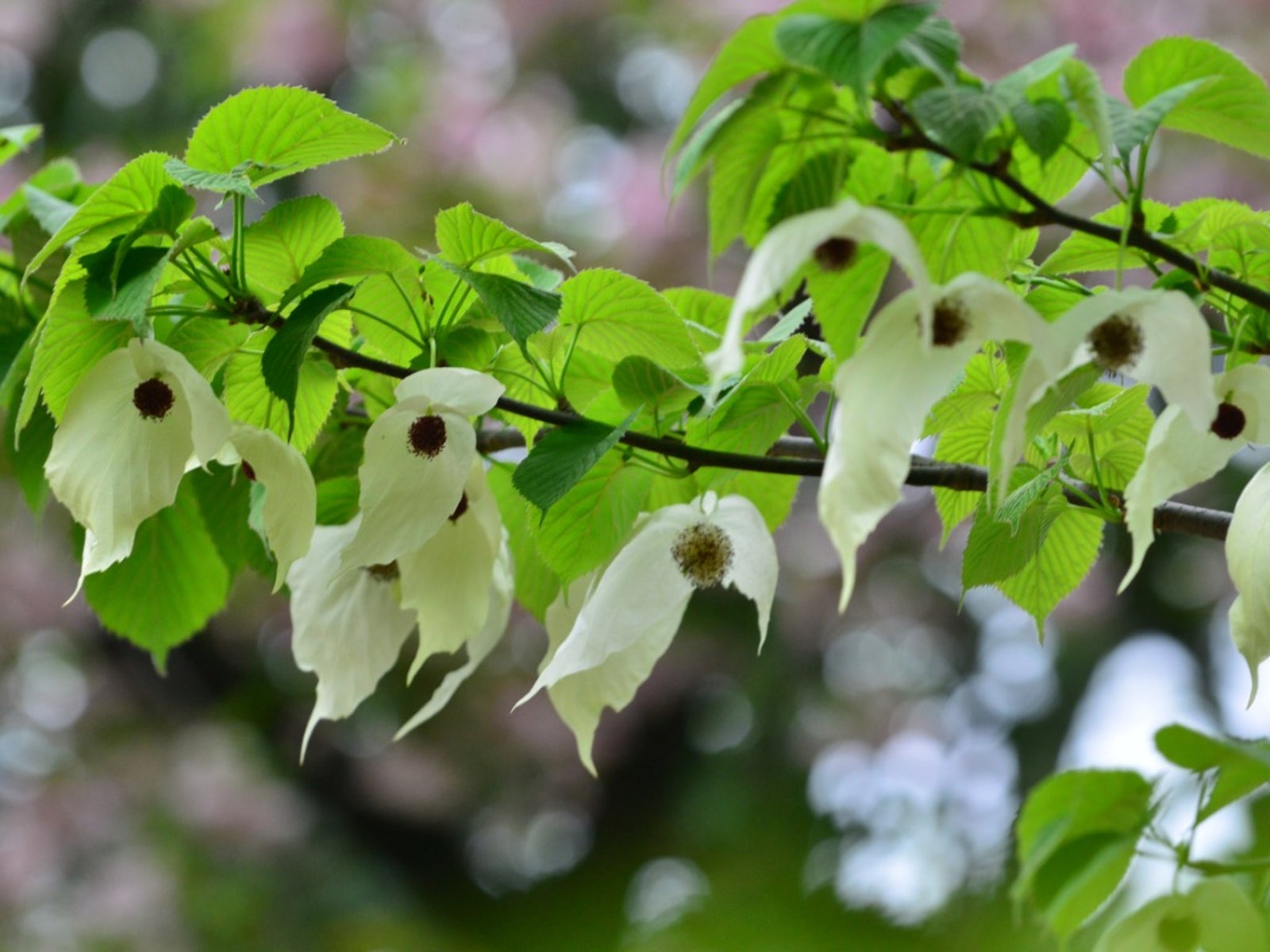
Davidia involucrata is the only species in the genus and is a medium sized tree native to altitudes of 3,600 to 8,500 feet (1097 to 2591 m.) in western China. Its common name of dove tree is in reference to its distinct pairs of white bracts, which dangle from the tree like large white handkerchiefs and is, in fact, sometimes referred to as the handkerchief tree. A bract is a modified leaf arising from the stem at the point of the flowers development. Usually inconspicuous, bracts on growing dove trees are quite spectacular akin to the brilliant red bracts of poinsettias.
Dove Tree Info
The pyramid shaped dove tree has heart-shaped leaves arranged alternately and about 2 to 6 inches (5 to 15 cm.) long. Dove tree first flowers in May with two bracts surrounding each flower; lower bracts are 3 inches (7.6 cm.) wide and 6 inches (15 cm.) long while the upper bracts are half that. Flowers become drupes, which then ripen into ridged balls containing around 10 seeds. A little side note regarding dove tree info is that it is named after Armand David (1826-1900), a French missionary and naturalist living in China from 1862-1874. Not only was he the first westerner to recognize and collect specimens of dove trees, but he is also responsible for being the first to describe the giant panda. The deciduous growing dove trees attain a height of 20 to 60 feet (6 to 18 m.) with a 20 to 35 foot (6 to 10.6 m.) width and, although becoming more frequently cultivated, they are categorized as endangered. Today, gardeners' prize growing dove trees for the showy bracts, but the species has been around since the Paleocene, with fossils of its existence found in North America.
Dove Tree Growing Conditions
Dove tree growing conditions of the higher altitudes of China give us a clue as to what conditions need to be mimicked for optimal growth. A moderate grower, dove tree plant care should be undertaken in USDA zones 6-8. The care of dove trees requires a site of sun to partial shade in moist, well-draining soil, although it thrives in sunnier conditions. Be sure to select a planting area that is protected from the wind and areas of standing water. This specimen is not drought tolerant, so be sure to maintain a regular irrigation schedule, but don't drown it! Bring a little patience with your dove tree plant care -- the tree may take 10 years to flower - but with proper care will give you and your family many years of pleasure.
Sign up for the Gardening Know How newsletter today and receive a free copy of our e-book "How to Grow Delicious Tomatoes".

Amy Grant has been gardening for 30 years and writing for 15. A professional chef and caterer, Amy's area of expertise is culinary gardening.
